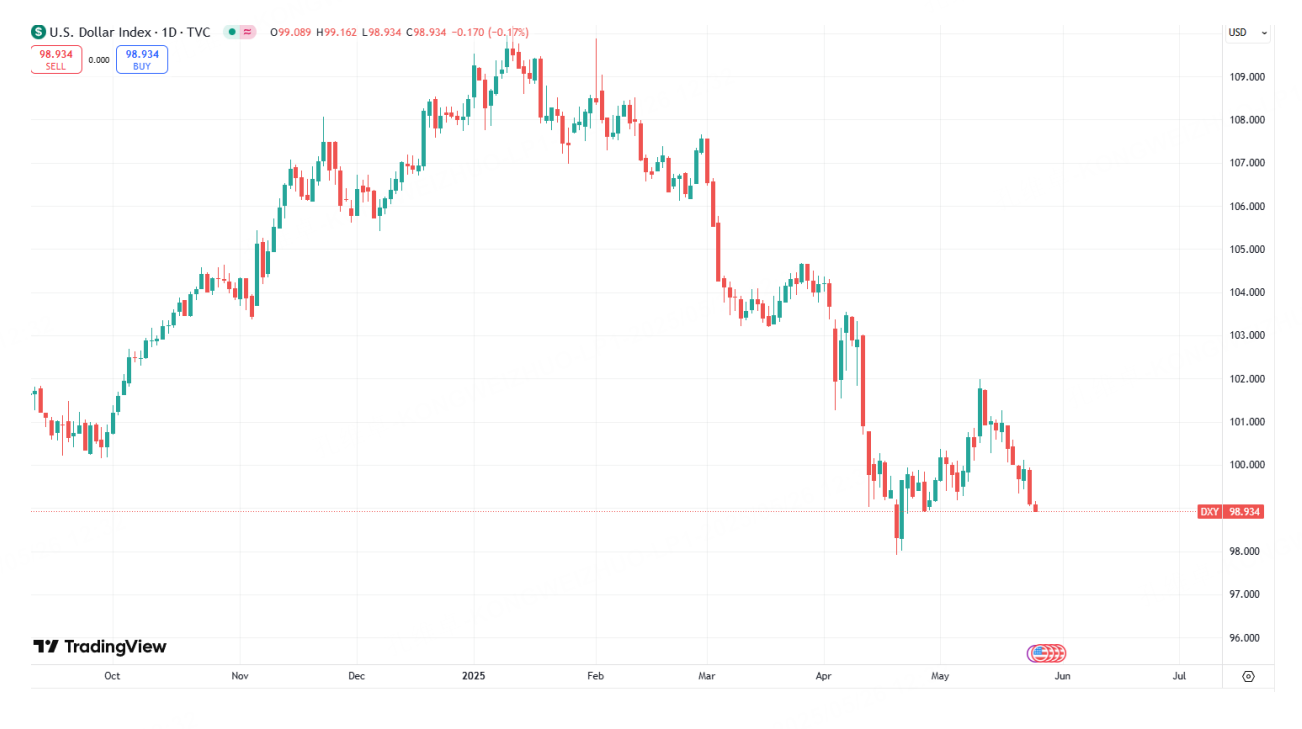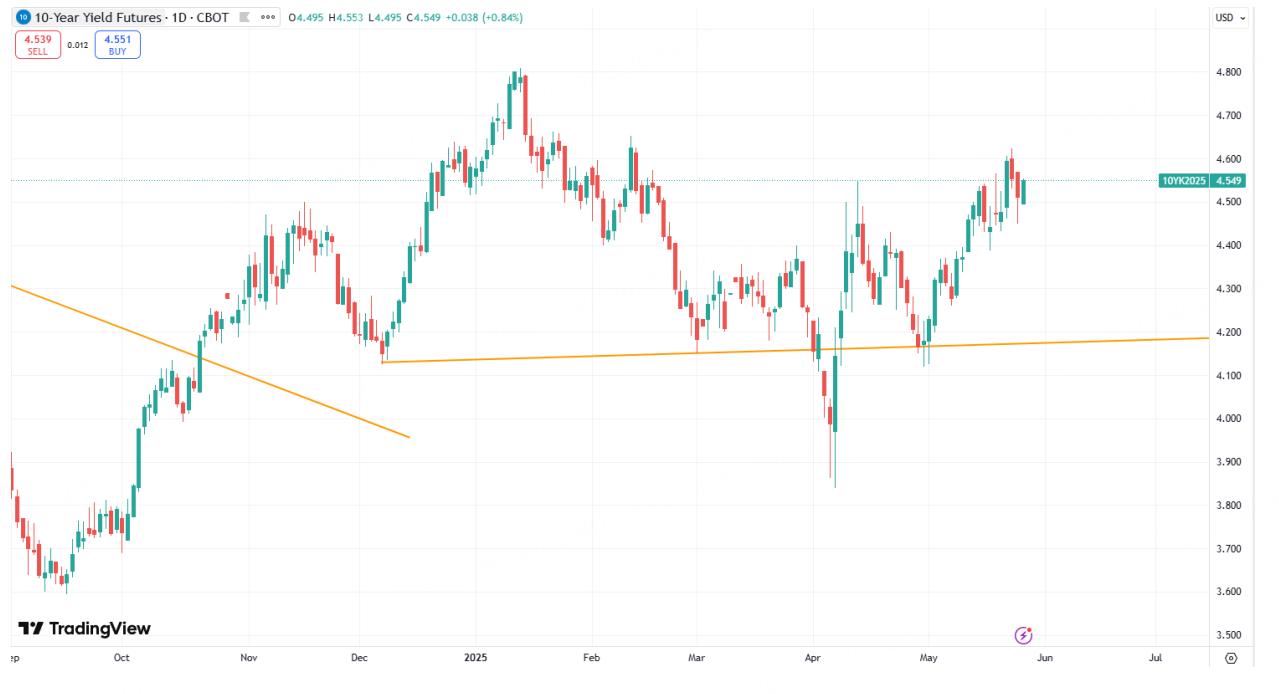Last week, Trump confidently recommended imposing a 50% tariff on the European Union starting June 1, stirring up considerable media and market speculation. Yet by the weekend, he had already backtracked, announcing an extension of the deadline for these tariffs to July 9. What some call “the art of negotiation” has become, in Trump’s hands, a constant display of unpredictability. Whether this is true art is debatable, but what’s clear is that with Trump, a simple remark can easily trigger a major market turning point.
On a broad scale, tariffs are just being postponed, not resolved. This helps explain why the U.S. dollar performed poorly after today’s news and why long-term Treasury yields remain under upward pressure. In my view, these two metrics are key indicators for assessing potential market risks. The strength or weakness of the dollar reflects the market’s expectations about the outcome of the U.S.-led deglobalization campaign—Trump previously attempted to pressure other countries into devaluing their currencies, but the real effect has been to heighten worries about a U.S. recession. In short, a strong dollar would signify victory for America’s tariff war. So as long as that outcome remains unlikely, the dollar index will stay under pressure.
The yield on U.S. Treasurys is another important reference for gauging market confidence in American assets. Traditionally, when investors seek safety, money flows into the bond market, which pushes yields lower. Lower yields mean lower borrowing costs—one of Trump’s strategic goals, and one of the reasons he has continually urged Jerome Powell to cut rates. But markets have moved in the opposite direction: selling off Treasurys and pushing yields higher. The next Fed rate cut, as of now, likely won’t happen until July. Over the next two months, we may see another roller-coaster ride in risk assets.
Compared to the tariff issues between the U.S. and Europe, the dynamics between China and the U.S. remain even more crucial and sensitive, as history and market attention show. The current phase of tension and friction between these two “G2” nations is really just a process of mutual testing and reassessment. It’s hard to predict the exact moment when Trump will rip off the mask and strike again, but for him, it’s only a matter of time. After this feint toward the EU, if the next move isn’t directed at other “allies,” it will likely be aimed straight at China.
Back to the market: last week, we speculated that a turning point might be approaching. From some assets’ performance, we did see single-day reversal signals, but these have yet to develop into a sustained, accelerated trend. If news remains relatively calm through this weekend and into early next week, we’ll likely continue to see a consolidation at high levels after this short-term reversal. But if headlines begin to center on the key issues we mentioned above, we should be ready for the market to make its next big move.
$E-mini Nasdaq 100 - main 2506(NQmain)$ $E-mini S&P 500 - main 2506(ESmain)$ $E-mini Dow Jones - main 2506(YMmain)$ $Gold - main 2506(GCmain)$ $WTI Crude Oil - main 2507(CLmain)$



Comments